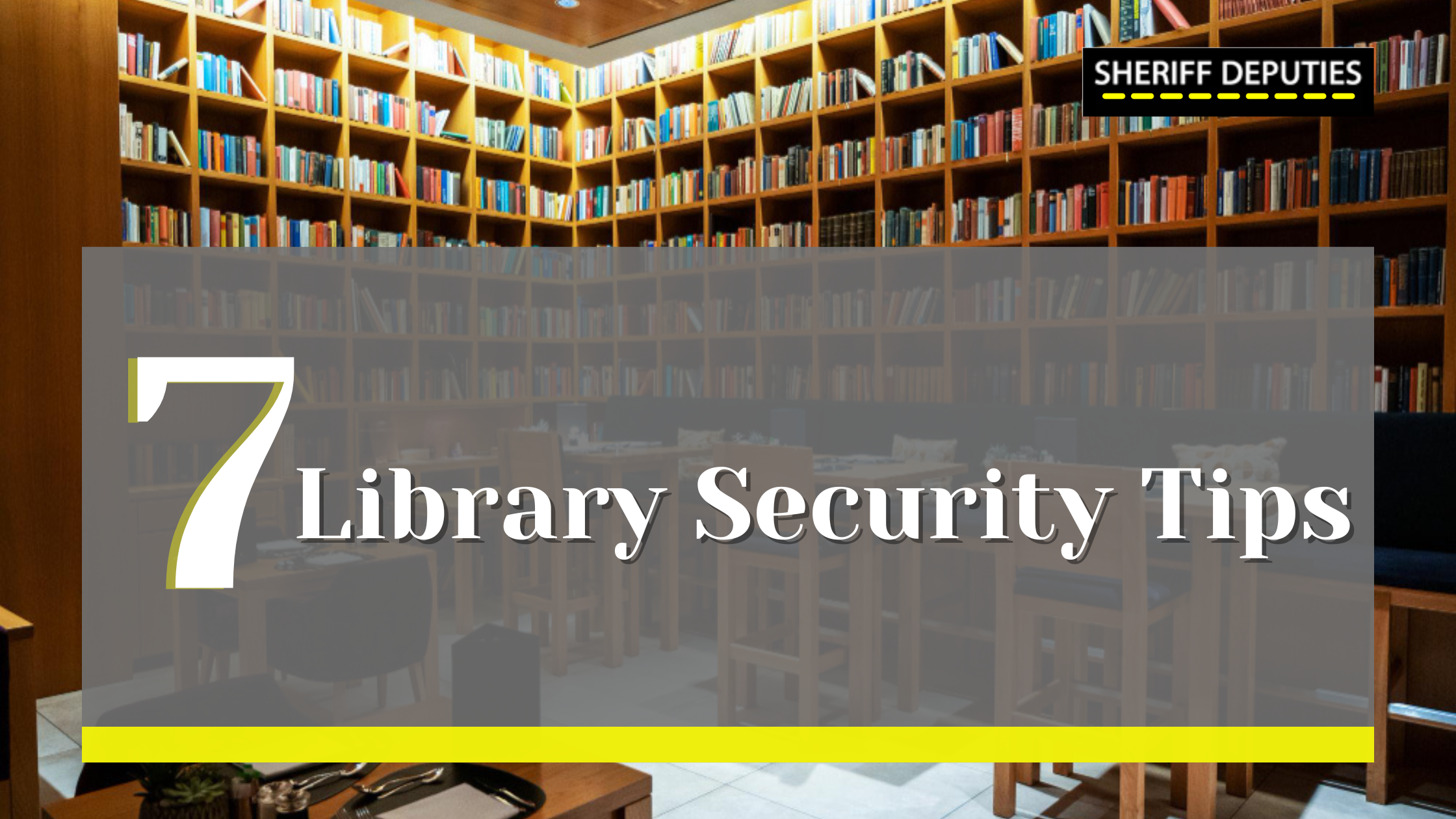According to Wikipedia, A library is a collection of books, and possibly other materials and media that is accessible for use by its members and members of allied institutions. In setting up a tertiary institution, one of the required facilities is the library.
For some, the library room is the most valuable room to be in, why? It houses the knowledge and discoveries that have helped to shape the world’s civilization.
Learning is a continuum and the acts of reading must be encouraged at all levels for personal and social advancement.
6 Library Security Tips
In this article, we are looking at how to ensure that the library is guarded and how it can be secured because in recent times we have seen many library owners bemoan the ill use of the library and book theft among readers; these acts will harm the body of knowledge and the quality of education among our young population
.With more than 4,000 Sheriff Deputies Guards working across 30 private universities in Nigeria, we have earned the right to share these practical tips to secure your library, these tips have proved effective and would be of immense benefit to library owners.
Anticipate theft and take precautions
A good security system should be in place to protect the library from theft. It will be unwise not to anticipate theft after investing so much in setting up a library in the first place. The form of the education should be considered when getting a security system in place, materials in the form of Microfilm, motion picture film, film and color negatives, as well as other materials that are susceptible to damage, can be stored remotely.
Installation of surveillance camera, locks to door entrances should be be generously budgeted for. For quicker response to the emergency of theft, have guards or library staff patrol the library intermittently.
Ownership marks
It can be challenging to prove ownership of library materials if they are not identified and described.
Marks of ownership should be made with a prominent and permanent ink stamp on an inseparable portion of the material at the point of receiving the item in the library facility (before it’s arranged on the shelves/storage units).
Generally, the stamp is usually small (no more than 2 centimeters), and the ink is made from a non-greasy substance. The most ideal part of the book where the stamps should be placed is on the verso (back) of the title page.
The mark should clearly state the name and general address of the library owning the materials.
Protecting materials on display
Materials on exhibit are especially vulnerable to theft and mutilation. Exhibits featuring rare or other special materials can attract thieves or vandals.
Display stands should be within a controlled area so that they are under the surveillance of guards or library personnel. The cases should be securely locked and constructed from materials difficult to dismantle or damage.
Artifacts displayed in wall-mounted frames should similarly be within a controlled area. The frames should be constructed from materials that are difficult to breach and secured to the wall by a method that requires considerable effort to remove.
Proper Inventory Maintenance
Inventory management in the case of Library helps owners identify which and how much academic materials to order at what time and to number of books they have in the library at every given time.
Inventory management is essential to theft prevention. Library staff will find it nearly impossible to determine whether and when a book is being stolen if they are not sure of the quantity and kinds of books they have.
Access and Usage Control
The question of who uses and how the library is used must be answered with security and safety in mind. There must be strict controls over access to secure storage areas. Unauthorized visitors should never be left alone in storage areas, especially cleaning, and maintenance personnel.
Library stock is generally at greater risk when visitors (non-staff) are used to the library settings.
To prevent theft or damage of rare or unique materials, readers should always supervise themselves closely.
Guarding against mutilation and vandalism
Whether a library uses open stacks (allowing readers direct access to the bookshelves) or closed stacks (requiring readers to locate a book in the catalog and rely on staff to retrieve it), staff need to observe readers from time to time to discourage deliberate mutilation or vandalism of library materials.
Mutilation often takes the form of cutting out book leaves or illustrations.
Controlling entrances and exits
Ideally, all bags and coats should be checked at the entrance to libraries, which should ensure that there are safe areas for storing them.
While it is acceptable for readers to bring laptop computers into a research area, all readers should understand that their computer case must be checked when they leave the area.
Action point
With the 7 tips shared here, your library should be more secure. The Library remains a critical part of our learning system and development can only happen if the teaming population has access to it, hence it’s preserved and improved upon.

